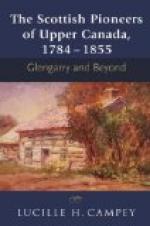The Portuguese monarchy had begun to take possession of the Azores archipelago from the year 1432. These islands were probably known to the Phoenicians, and even to the Arabs of the Middle Ages; between the fourteenth and fifteenth centuries they had been rediscovered by Catalans, Genoese, Flemings, and Portuguese; and after 1444 the Azores began to prove very useful to the sea adventurers of this wonderful fifteenth century, as they became a shelter and a place of call for fresh water and provisions almost in the middle of the Atlantic, 800 to 1000 miles due west of Portugal. Portuguese vessels sailed northwards from the Azores in search of fishing grounds, and thus reached Iceland, which they called Terra do Bacalhao.[10] They may even before Cabot have visited in an unrecorded fashion the wonderful banks of Newfoundland—an immense area of shallow sea swarming with codfish.
[Footnote 10: Bacalhao in Portuguese (and a similar word in Spanish, old French, and Italian) means dried, salted fish. It comes from a Latin word meaning “a small stick”, because the fish were split open and held up flat to dry by means of a cross or framework of small sticks, the Norse name “stokfiske” meant the same: stockfish or stickfish.]
As soon as the news of the Cabot voyages reached the King of Portugal he arranged to send an expedition of discovery to the far north-west, perhaps to find a northern sea route to Eastern Asia. He gave the command to Gaspar Corte-Real, a Portuguese noble connected through family property with the Azores. Starting from the Azores in the summer of 1500, Corte-Real discovered Newfoundland, and called it “Terra Verde” from its dense woods of fir trees, which are now being churned into wood pulp to make paper for British books and newspapers. He then sailed along the coast of Labrador,[11] and thence crossed over to Greenland, the southern half of which he mapped with fair accuracy. His records of this voyage take particular note of the great icebergs off the coast of Greenland. His men were surprised to find that sea water frozen becomes perfectly fresh—all the salt is left out in the process. So that his two ships could supply themselves with fresh water of the purest, by hacking ice from the masses floating in these Greenland summer seas. The next year he started again, but on a more westerly course. His two ships reached the coasts of New Jersey and Massachusetts, and sailed north once more to Labrador. They captured a number of Amerindian aborigines, but only one of the two ships (with seven of these savages on board) reached Portugal; Gaspar Corte-Real was never heard of again. His brother Miguel went out in search of him, but he likewise disappeared without a trace.




